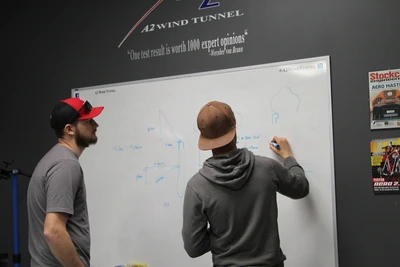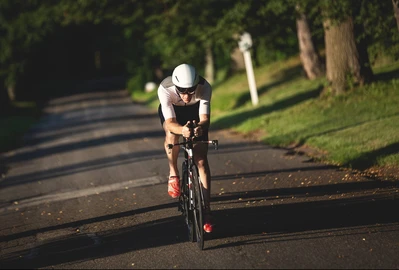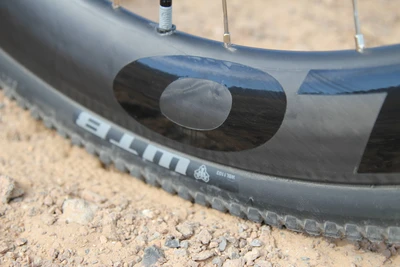Category: Aero Wheel Science
-

Total Power – Measuring Cycling Wheel Performance
In cycling, the power you put into the pedals is measured in watts. Ideally, each watt is used to move you forward, but in reality, only a portion of those watts are used for that purpose and there are losses along the way. As a cyclist, every watt you haven’t lost counts towards how fast…
-

FLO All Sport Series – The A2 Wind Tunnel Results
From an aerodynamic perspective, the wind tunnel is the the ultimate test of any product. When designing the FLO Gravel series we realized the importance of a wide internal-rim width when trying to lower rolling resistance. The goal with the FLO All Sport Series was to widen the internal-rim width, and optimize rim shapes around…
-

Understanding Being Aero & Watts For Cyclists
We commonly hear the phrase “be aero” in the cycling world, but what does it really mean? The quick answer, “being aero” is when the watts you put into the pedals are used to move you forward and not used to overcome drag, therefore making you faster. We already know that being aero is important;…
-

Understanding Rolling Resistance & Impedance For Cyclists
Rolling resistance is a hot topic in cycling. The truth is, rolling resistance matters for all cyclists regardless of whether you ride on road, gravel, or even a track. It’s important if you race, or simply just enjoy riding on the weekends. Why? It effects things like your speed and grip which matter to everyone.…
-
Wind Tunnel Results and Cycling Wheel Aerodynamics Tutorial
Legacy Article: The data discussed in this article is taken from our previous generation of wheels. Introduction When we set out on our journey to design aerodynamic cycling wheels, we asked ourselves, “what makes a wheel aerodynamic?” We soon learned there wasn’t a real answer. After hours of research, computational fluid dynamics testing, and…
-
CFD Post Processing: A Matthew N. Godo Interview
It’s not often you get the opportunity to sit down with a true expert in a field, someone who is pioneering a movement in an industry. We’re very grateful to have been given one of these opportunities. Anyone who has spent time looking into cycling wheel aerodynamics has most likely come across the brilliant…
-
How Speed, Time, and Power are Affected by Reducing Drag
Note: For an updated version of this blog article displaying the time savings for our new 2016 model wheels, read this article. There’s a list of common questions we see from people trying to understand the importance of cycling wheel aerodynamics. These questions include the following: 1. Your CFD simulations and wind tunnel tests…
-
The Great Bike Wheel Debate – Aero vs. Weight
Legacy Article: The data discussed in this article is taken from our previous generation of wheels. “What will save you more time?” Improving the aerodynamics or decreasing the weight of your wheel set? Jon and I have probably been asked this question hundreds if not thousands of times since starting FLO. When designing FLO…
-
Aero vs. Weight – Follow Up
Legacy Article: The data discussed in this article is taken from our previous generation of wheels. We wrote a blog article at the end of January titled “The Great Debate – Aero vs. Weight.” To write the article, we partnered with Ryan Cooper – the brains behind Best Bike Split – to simulate the…
-

Aerodynamic Cycling Wheel Tutorial
Updated: 12/30/2022 Deep carbon fiber cycling wheels are faster due to better aerodynamics. While that’s a known fact understanding why they are faster is something most people do not understand. In fact, the right wheel, in the right situation can actually act like a sail and propel you forward. Yes, you heard that right, a…
-
Studying Bike Tires Part 1, Logging Data
For a while now, I’ve wanted to study the aerodynamic performance of tires on the road. We’ve done a bit of work in a wind tunnel, which is great, but it’s not the real world. In order to get the job done, we needed a way to log data on the road. Quite some time…
-
Studying Bike Tires Part 2, Elevation Data
I’ve learned a lot since I posted “Studying Tires Part 1, Logging Data.” I mentioned that I believed there was either a shift in the barometric pressure, or that the absence of temperature and humidity were the reason for the shift in my driveway’s elevation. Today I have the results. A 12-Hour…
-
Studying Bike Tires Part 3 Mounting The Logger
Last week I mentioned I was going to be busy in my garage making a mount for the data logger and sensors. Well, I have been. Here is what I have so far. The Basic Construction I thought about what to build this with and after looking at aluminum, pvc, plastic, etc.,…
